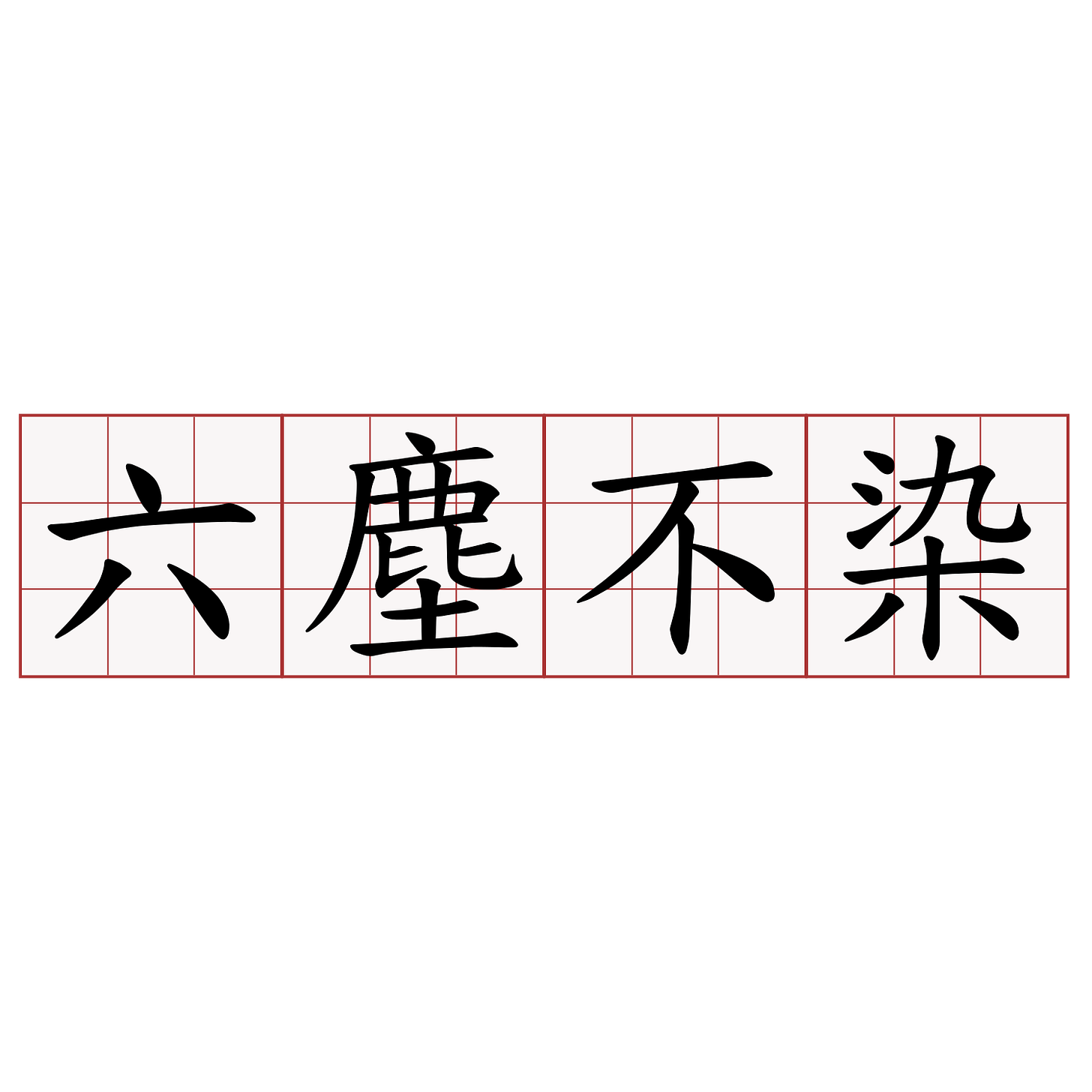Harmonize the Light, Together with the Dust.
Image: Buddhism has the idea of Liu Chen Bu Ran, “The Six Dusts do not Pollute,” which refers to the six types of attachment of: Colour, Sound, Smell, Touch and How the Heart Interacts with the Environment. It does not matter if Daoists or Buddhists first came up with the idea of the Dust World, what matters is that we take steps to reduce its impact on our spiritual light.
The next passage of Chapter Four reads:
挫其銳,
Cuo Qi Rui,
blunt the sharpness,
解其紛,
Jie Qi Fen,
release the knotted,
和其光,
He Qi Guang,
Harmonize the Shine,
同其塵。
Tong Qi Chen.
Together with the Dust,
Just like earlier chapters, there are many paired concepts which establish ways to overcome the bivalences proposed in chapter two.
Today let's have a look at the paired concepts of chapter 4:
挫銳 Cuo/Rui:
挫Cuo means to suppress, dampen, or hinder,
銳 Rui means something which is pointy and sharp.
Thus
挫其銳,
Cuo Qi Rui,
Means something like:
“blunt the sharpness,”
Keep in mind that these features of blunting sharpness and other things described in this chapter are all activities of the Dao, and by proxy people that practice the Dao.
To blunt sharpness means to blunt your own sharpness, not the sharpness of others.
Consider that sharpness refers to the hard features of your personality and thought, so blunting sharpness refers to using the rushing of the Dao to subdue your anger, vindictiveness, violent tendencies, and any other negative trait of your personality.
By doing this, not only will your mind be an easier place to live in,but it will also gradually create a situation of “teaching without words,” since the people around you will see your placidity and gentleness and be gradually drawn toward exhibiting the same behavior themselves.
The activity of the Dao is to benefit all, so the activity of the Daoist (the person who subscribes to the teachings of the Dao) should do exactly the same thing, and on a psychological level this is done by blunting the mind's sharpness.
解紛 Jie/Fen:
解Jie means to release, unbind or clarify, while 紛 fen means something which is knotted, bothered, or confused.
To release the knotted means to do away with the constraints you put upon yourself with systems of thought.
If you always think about how to obtain benefit, your status, or how to engage in society in order to make progress in your career, social life or finances, or if you always think about how to bring positive feelings to your body through sex, alcohol, drugs, fine foods or other carnal enterprises, your mind will certainly become confused and perturbed.
Releasing that which is knotted should be seen as using silence and inward reflection as a means to give your mind space to operate on its most natural level.
Thinking too much is tiring for body and spirit, and the emotions that come with desire, fear, anger, sadness and even joy have genuine consequences on the health of your body, so taking time to become peaceful and clear headed is a great medicine which can be used to release the binds which have for so long been in control of your mind.
和光 He/Guang:
和He means to be in harmony or to be harmoniously together, 光 Guang means luminescence, so harmonizing the light can be understood as bringing the light of the spirit into harmony by illuminating the heart.
Illuminating the heart does not mean imagining a light in the body, it means stopping the thoughts and entering into stillness and clarity.
This way the light of the spirit will be smooth, harmonious and constant, rather than being disturbed by the flickering of Yin thoughts and desires.
同塵 Tong/Chen:
同Tong means together while 塵 Chen means dust, so being together with the dust means that the light of the spirit must be harmonized with the physical body and world.
Daoism is not a form of escapism, and all through the Dao De Jing we constantly meet with ethical statements about how to live in society in a harmonious, peaceful and mutually beneficial way.
Dust refers to the world and being together with the dust is the admonition that although we may cultivate enlightenment, we must also live in peace and cooperation with others, thus the light of the spirit and the dust of the world may exist together and although your body lives in the world, your mind is not disturbed by the transformations of the world.
This section of chapter four is about the psychology of the Dao and from an Internal Alchemy perspective it teaches us how to make the mind still, slow down our thoughts, release our delusional thinking, connect to the silent light of the spirit, and still live in the world without being destroyed by it.
By reading the Internal Alchemy Classics it is possible to see terms like Dust being applied to Post-Heaven Qi in the Du Meridian, but I don't think that is the original meaning of the Dao De Jing, so rather than needlessly complicating things with such interpretations, I prefer to present this short and succinct reading of the document, I hope it was helpful!
This week in the subscriber's only chapter we will continue our annotation of the Liao Shen Jing, one of the best Internal Alchemy Classics out there, so make sure to go and subscribe. For less than the price of a trip to starbucks each month you can receive complex Internal Alchemy instruction which is difficult to find anywhere else.


